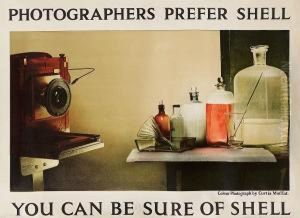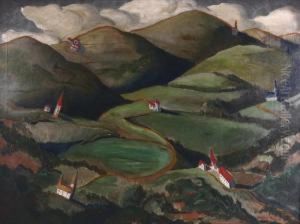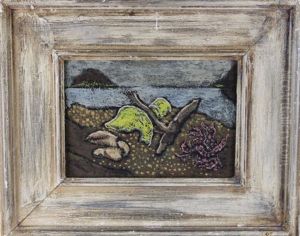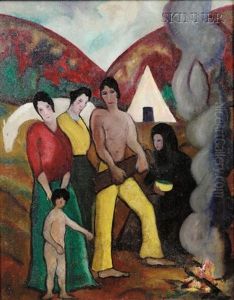Curtis Moffat Paintings
Curtis Moffat was an innovative artist and photographer, born in 1887 in New York, USA, but who spent a significant part of his career in Europe, contributing to the avant-garde movement of the early 20th century. Moffat is often celebrated for his dynamic involvement in the realms of photography, particularly in portrait and abstract photograms, as well as his contributions to interior design and the decorative arts. His work was instrumental in blending the boundaries between fine art and applied arts, showcasing a modernist sensibility that was ahead of its time.
After studying in the United States, Moffat moved to London in the early 1920s, where he became deeply involved in the city's artistic and cultural scene. He opened a photographic studio with Olivia Wyndham, becoming a sought-after photographer for portraits of society figures and celebrities of the day. His photographic style was marked by a unique blend of glamour and experimentation, often incorporating innovative techniques such as double exposure and the use of mirrors to create complex, layered images.
Moffat's contributions to the art world were not limited to photography. He was also involved in designing avant-garde interior spaces and furniture, reflecting the modernist trends of the time. His work in this area showed a keen interest in merging functionality with aesthetic appeal, a principle that would become a hallmark of modernist design.
In the mid-1920s, Moffat moved to Paris, where he became friends with key figures of the modernist movement, including Man Ray and Pablo Picasso. It was during this period that he began experimenting with abstract photograms, which he called 'light paintings.' These works were created without a camera by placing objects directly onto photosensitive paper and exposing them to light, resulting in images that captured the interplay of shadow and form in a way that was revolutionary at the time.
Despite his significant contributions to modernist art and photography, Moffat's work was somewhat overlooked after his death in 1949. However, recent years have seen a resurgence of interest in his work, with exhibitions and research shedding new light on his contributions to the avant-garde movement and his role in shaping the visual culture of the early 20th century.



